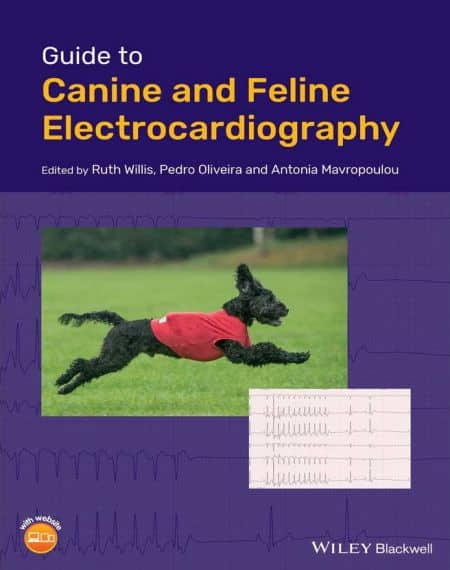Guide to Canine and Feline Electrocardiography. To many veterinary students, veterinarians and veterinary nurses, electrocardiography (ECG) can seem like a daunting challenge and somewhat of a mystery.
Guide to Canine and Feline Electrocardiography

Arrhythmias can be life threatening and anti‐arrhythmic drugs may have the potential to be pro‐arrhythmic, factors which often intimidate clinicians and can instill a fear of possibly harming rather than helping a patient. However, for those who master this challenge, they find ECG thoroughly rewarding as it is one of the more logical fields in veterinary medicine and it appeals to the puzzle solver in us.
The authors of this Guide to Canine and Feline Electrocardiography have undertaken the challenge of bringing together their expertise in understanding the pathophysiology, but also diagnosing and managing arrhythmias in an outstanding, extensive review of cardiac ECG.
The reader is taken systematically through the basics of ECG generation: the required equipment for ECG acquisition, detailed explanation of the mechanisms underlying arrhythmias as well the evaluation of the arrhythmia substrate. The book provides advanced, up‐to‐date description of all important arrhythmias encountered in dogs and cats, highlighting both the main characteristics and breed‐specific differences and in‐depth therapeutic considerations. The authors have taken a highly visual approach, where all phenomena described are illustrated with original colour figures and beautiful ECG traces. Examples of normal ECG recordings, practice electrocardiograms and a diagnostic approach to real‐life electrocardiograms of many clinically important arrhythmias will help the reader to feel comfortable and confident to interpret even the most complex arrhythmias. Valuable review questions, self‐assessment sections as well as recommended reading are also built‐in, and a comprehensive list of references are provided at the end of each chapter.
This book is a first of its kind in veterinary medicine as it also includes chapters on arrhythmia interpretation using long‐term ambulatory ECG (Holter or event recorder) monitoring; provides insight into interpretation of heart rate variability parameters and detailed description of pacemaker therapies, including surgical implantation techniques and programming instructions; and delivers valuable information on abnormal ECGs encountered in veterinary patients under anesthesia.
For those interested in advanced, interventional arrhythmia therapies, a large chapter is dedicated to cut-ting‐edge techniques of radiofrequency ablation, and the reader is presented with practical tips on how to set up an electrophysiology laboratory and taught the step‐by‐step approach on interpretation of intracardiac electrograms.
[expand title=” “]
[/expand]






